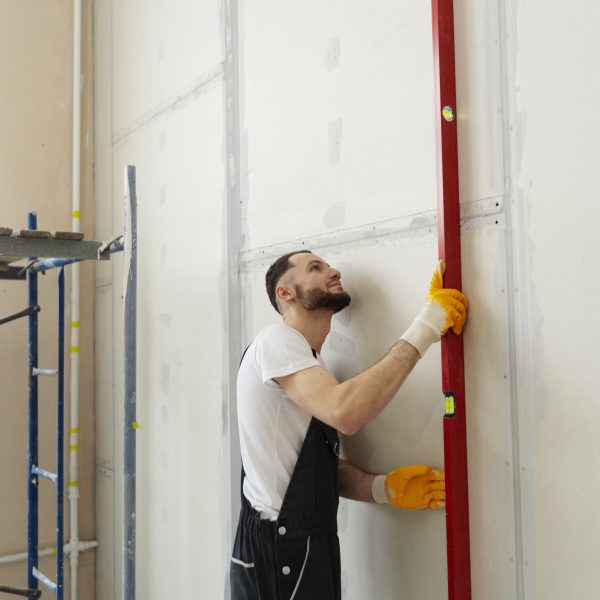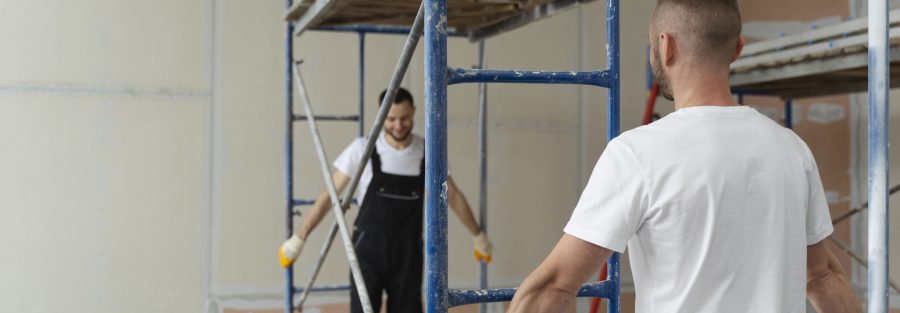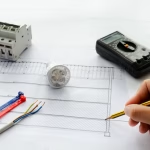Insulation is one of the foundations of modern construction. From residential homes to large commercial structures, insulation plays a vital role in comfort, energy efficiency, and long-term sustainability. However, installing insulation alone is not enough. Builders and contractors rely on finishing supports like drywall to maximize performance. How drywall improves insulation and energy efficiency in construction projects is a key consideration for builders aiming for better results.
At All Pro Estimation LLC, we often see contractors struggling to align accurate drywall estimating services with proper planning of MEP estimating services. Understanding how drywall functions as an insulation barrier and how it integrates with MEP systems like plumbing, electrical, and HVAC is key to achieving cost control and efficiency.

What is Drywall and How Does it Support Insulation?
Drywall, also called gypsum board, is a widely used finishing material for ceilings and walls. By placing plaster between reinforced sheets, it creates a durable yet cost-effective finish. Its smooth surface is ideal for interiors, while its insulating properties add real value to construction projects.
Since insulation materials like fiberglass, cellulose, or foam are fragile, drywall acts as a shield. It protects the insulation and ensures that it continues to perform as intended. To plan effectively, contractors depend on drywall takeoff services and tools like a drywall cost estimator to calculate material requirements in advance.
Drywall Installation Process Over Insulation
The installation of drywall is simple but requires precision. The process includes:
- Cutting Boards: Standard drywall sheets are cut to fit walls or ceilings.
- Fixing: Boards are secured with nails or screws.
- Finishing: Includes taping, mudding, and sanding joints for a seamless finish.
Each step requires accurate material and labor planning. That’s why many contractors use a drywall estimator to avoid waste and unexpected costs.
How Drywall Enhances Energy Efficiency
Drywall contributes to insulation performance and overall energy efficiency in two main ways:
- Protection of Insulation: Drywall safeguards fragile insulation materials, extending their lifespan.
- Thermal Resistance: Special drywall boards with fire- and moisture-resistant additives improve insulation capacity.
For compliance with strict energy codes, contractors must rely on both drywall takeoff and MEP estimates to balance performance with budget.
Role of MEP Systems in Energy Efficiency
While drywall is critical, MEP (Mechanical, Electrical, Plumbing, and Fire Protection) systems are equally important. HVAC relies on insulation for efficiency, while plumbing and electrical systems must be carefully coordinated with drywall installation.
By combining MEP takeoff services with drywall takeoff services, contractors gain a clear financial picture and avoid costly mistakes. All Pro Estimation LLC provides both drywall and MEP cost estimation solutions to streamline this process.
Case Study
A mid-sized commercial project required high-performance insulation and a complex MEP layout. The contractor initially miscalculated drywall needs and overlooked HVAC ductwork placement, causing delays and overruns.
After consulting with All Pro Estimation LLC, we delivered accurate drywall takeoff services alongside MEP cost estimates. The revised plan accounted for duct openings, electrical pathways, and plumbing routes.
Results achieved:
- 15% material waste reduction
- 50% improvement in bid accuracy
- On-time project delivery
This case highlights how accurate MEP quantity takeoff and drywall estimation together prevent costly setbacks.
Applications of Drywall in Construction
Drywall is used in both commercial and residential construction for multiple purposes:
- Partition Walls—dividing indoor spaces
- Ceiling Finishes – concealing insulation and wiring.
- Fire-Resistant Walls—improving safety in basements and stairwells
With a reliable drywall estimator and MEP estimator, contractors can achieve precise budgets for projects of all sizes.
Why Accurate Estimation Matters
Delays, disputes, and budget issues often arise from poor estimates. That’s why All Pro Estimation LLC and Best Estimating Services deliver reliable drywall estimating services and MEP project cost estimation for contractors.
- Reduced financial risks
- Improved scheduling
- Stronger bidding strategies
- Fewer on-site disputes
All Pro Estimation LLC helps builders achieve project success with dependable drywall and MEP estimating services.
Conclusion
Drywall is more than just a finishing material—it protects insulation, enhances energy efficiency, and contributes to long-term building performance. When combined with accurate MEP cost estimation, it ensures construction projects run smoothly and efficiently.At All Pro Estimation LLC, we provide both drywall takeoff services and MEP estimates to help contractors save time, reduce costs, and win more bids.






